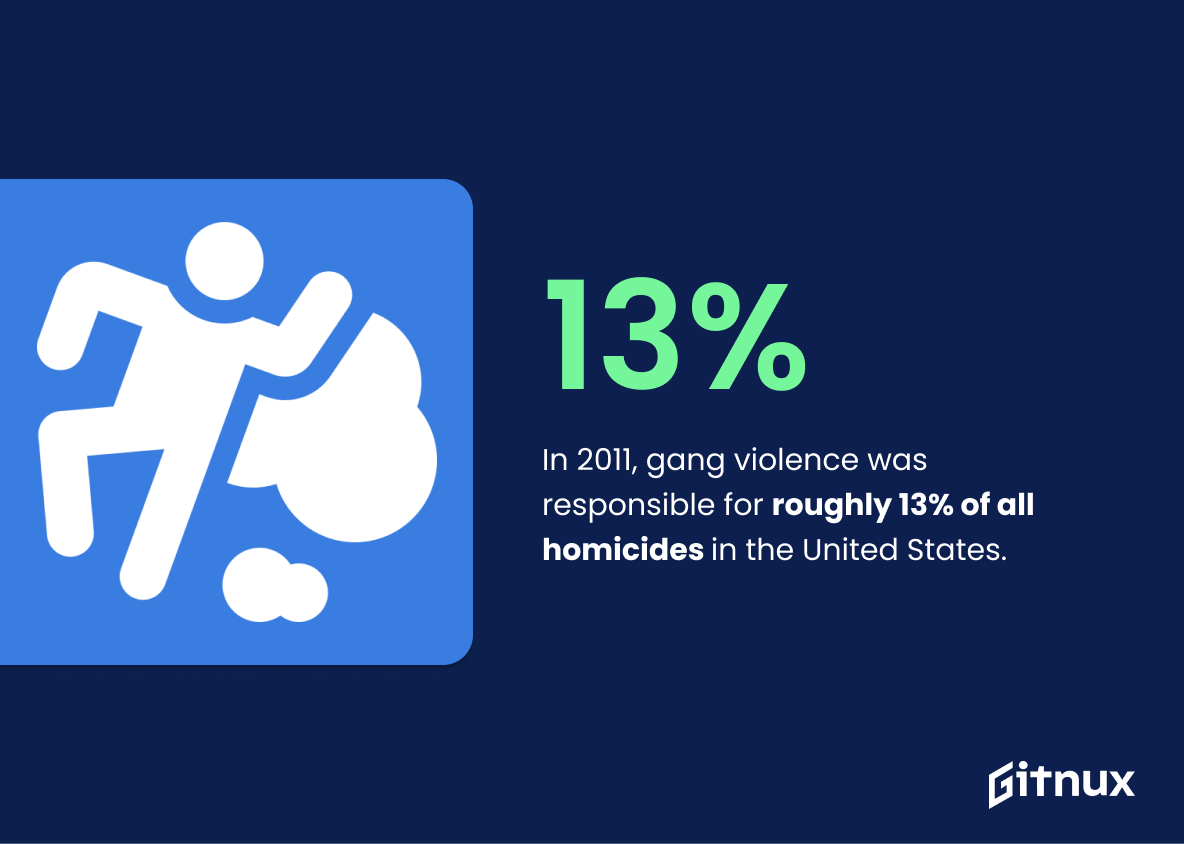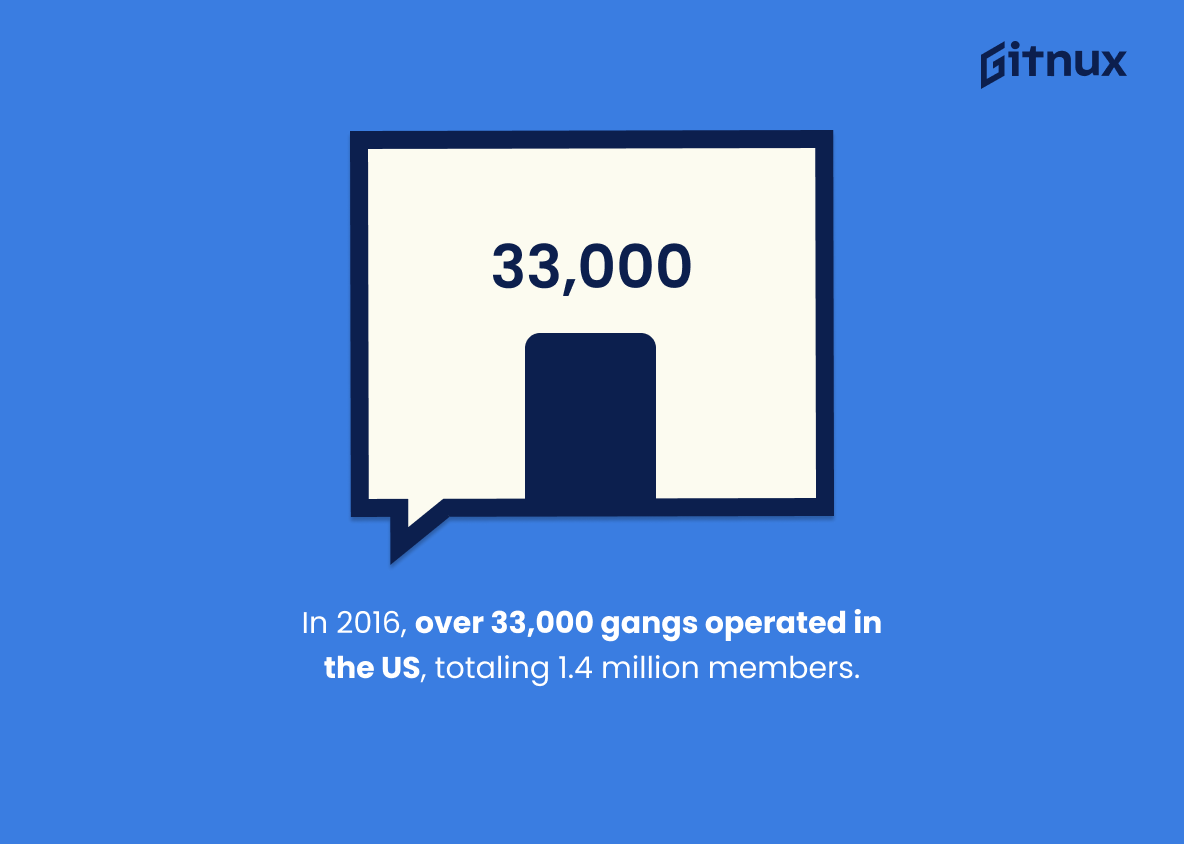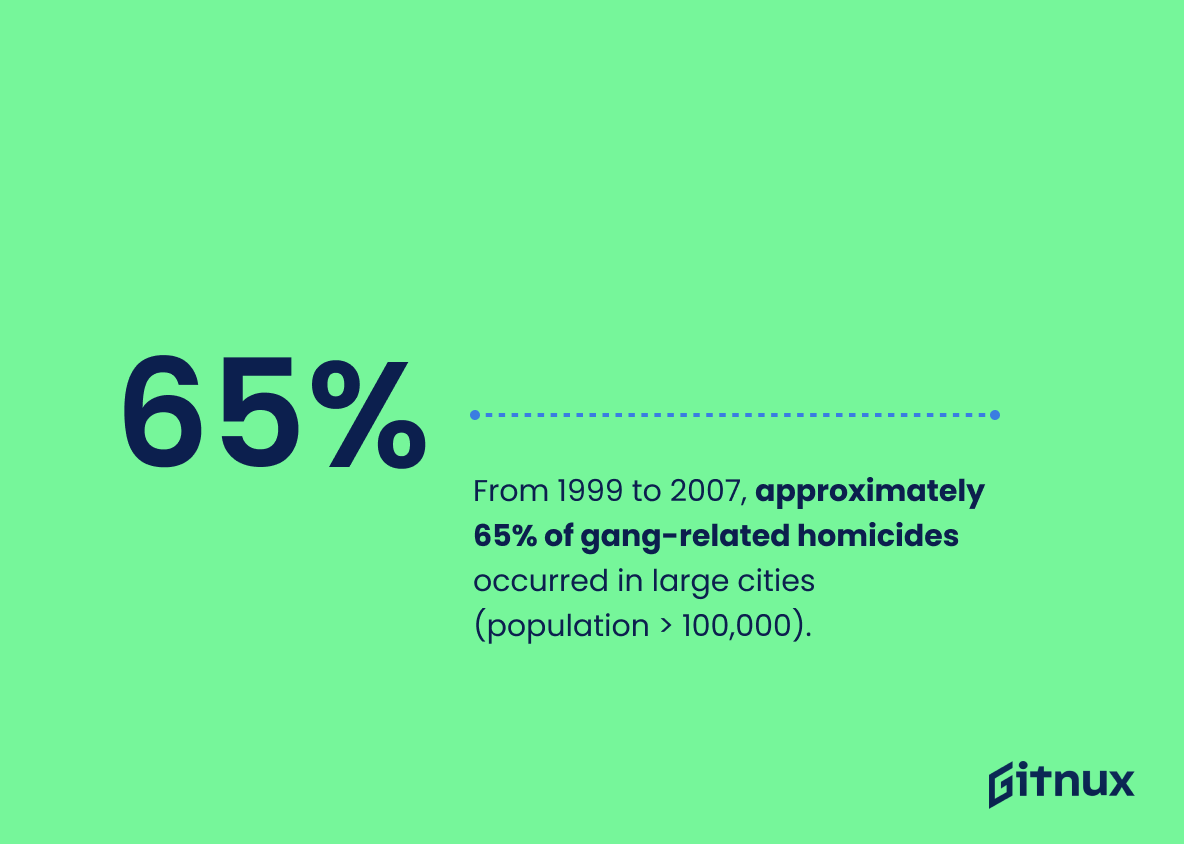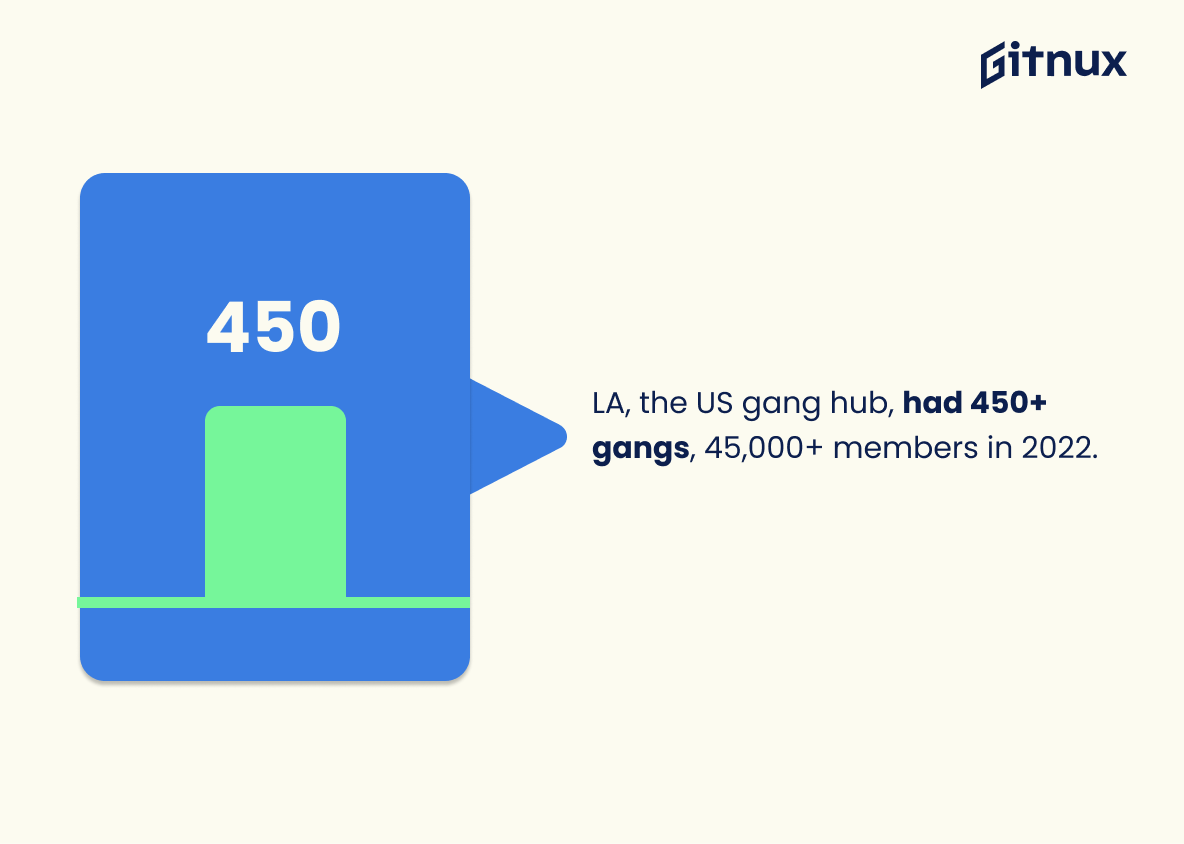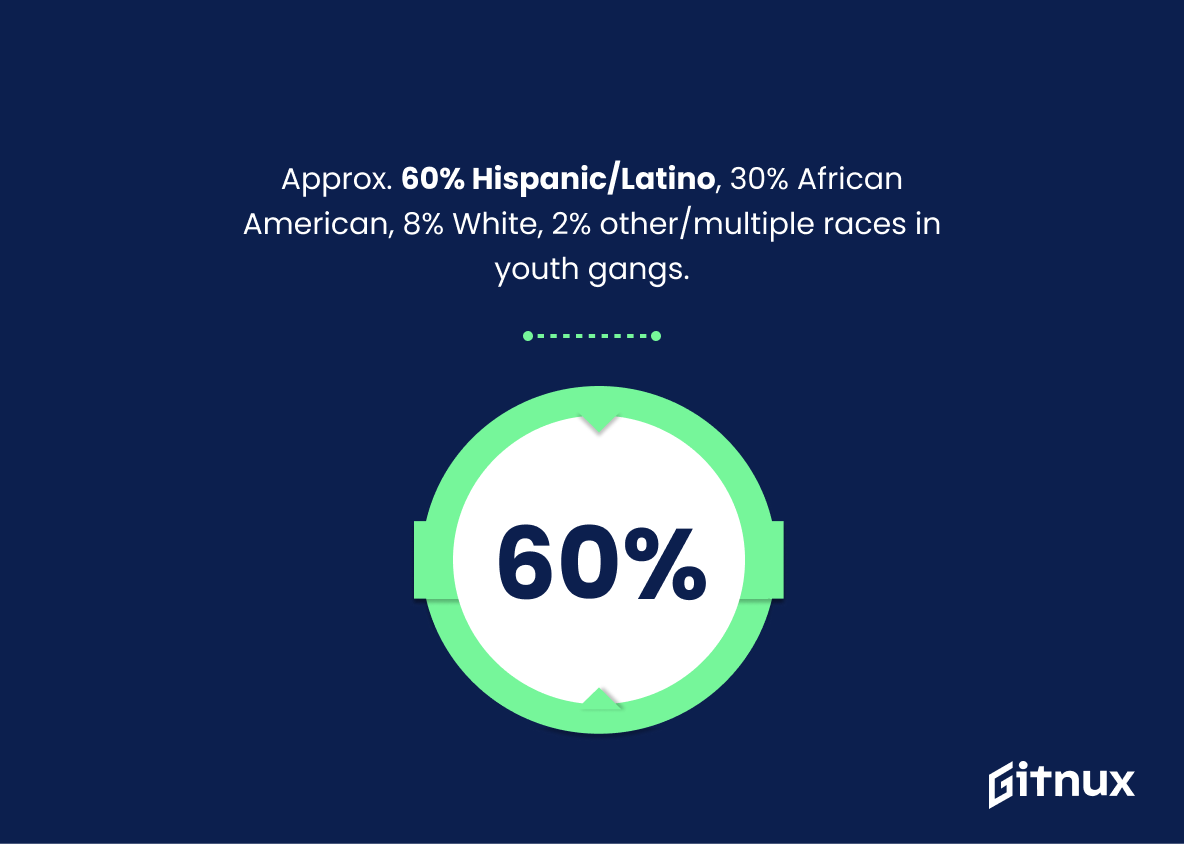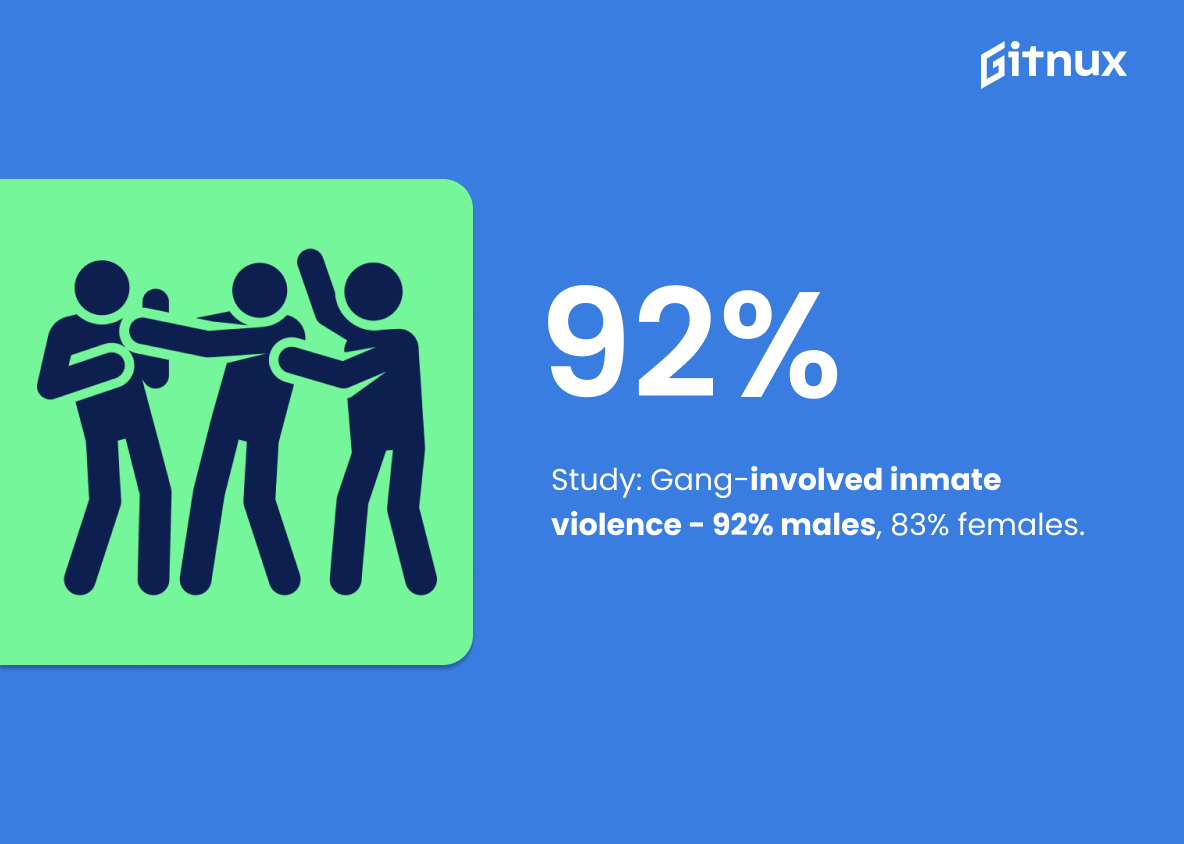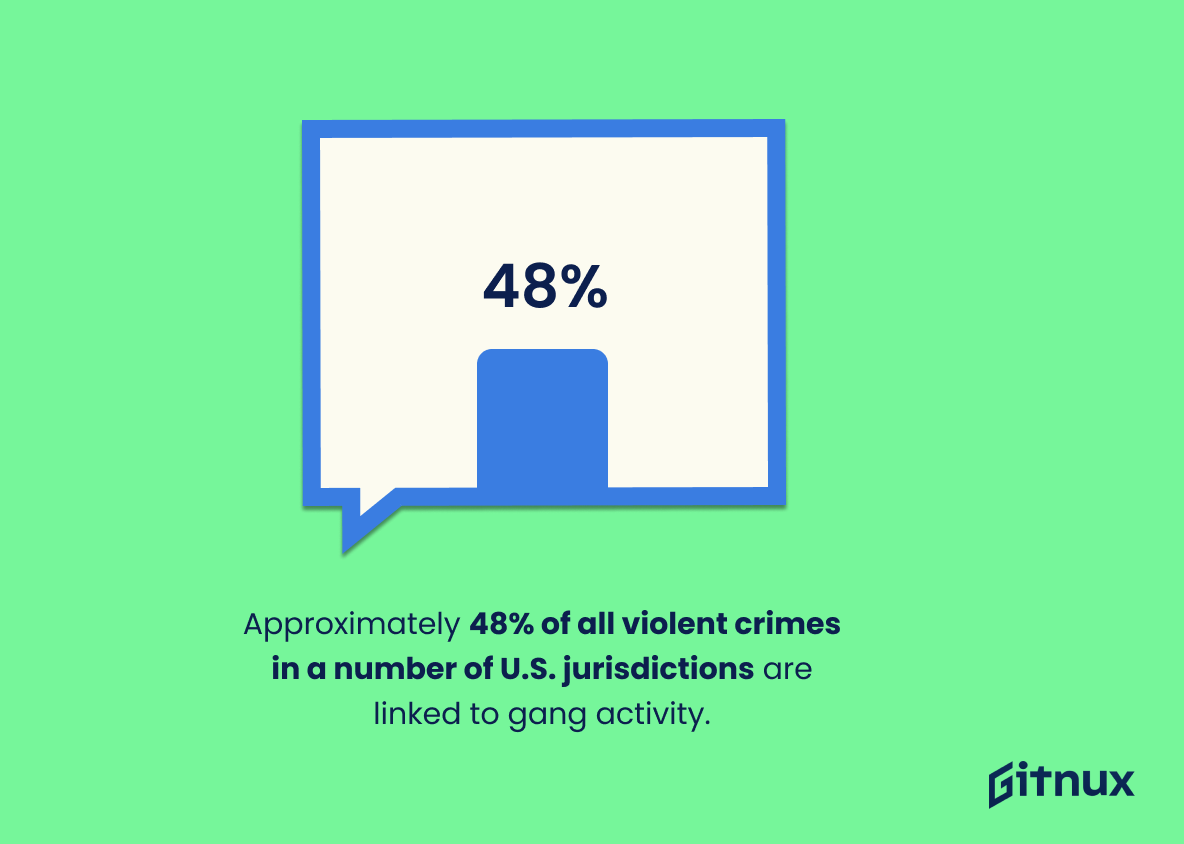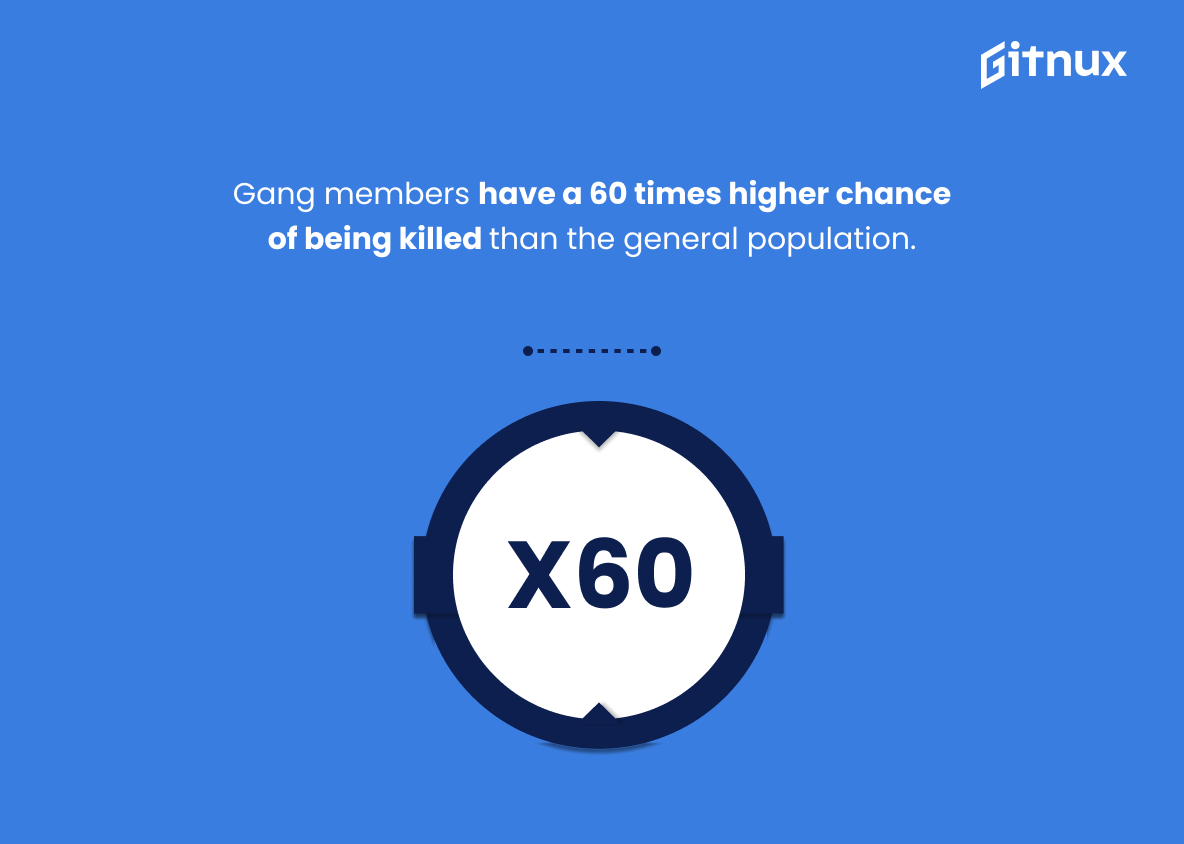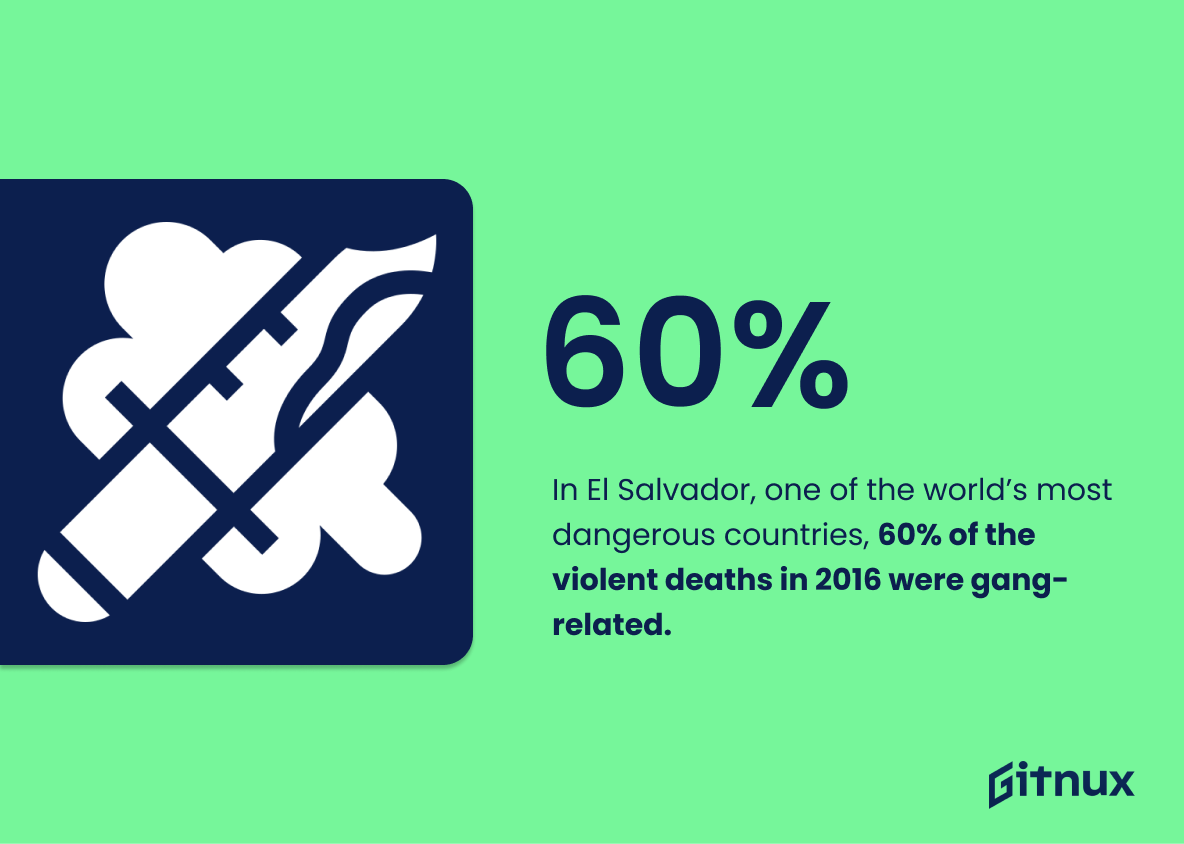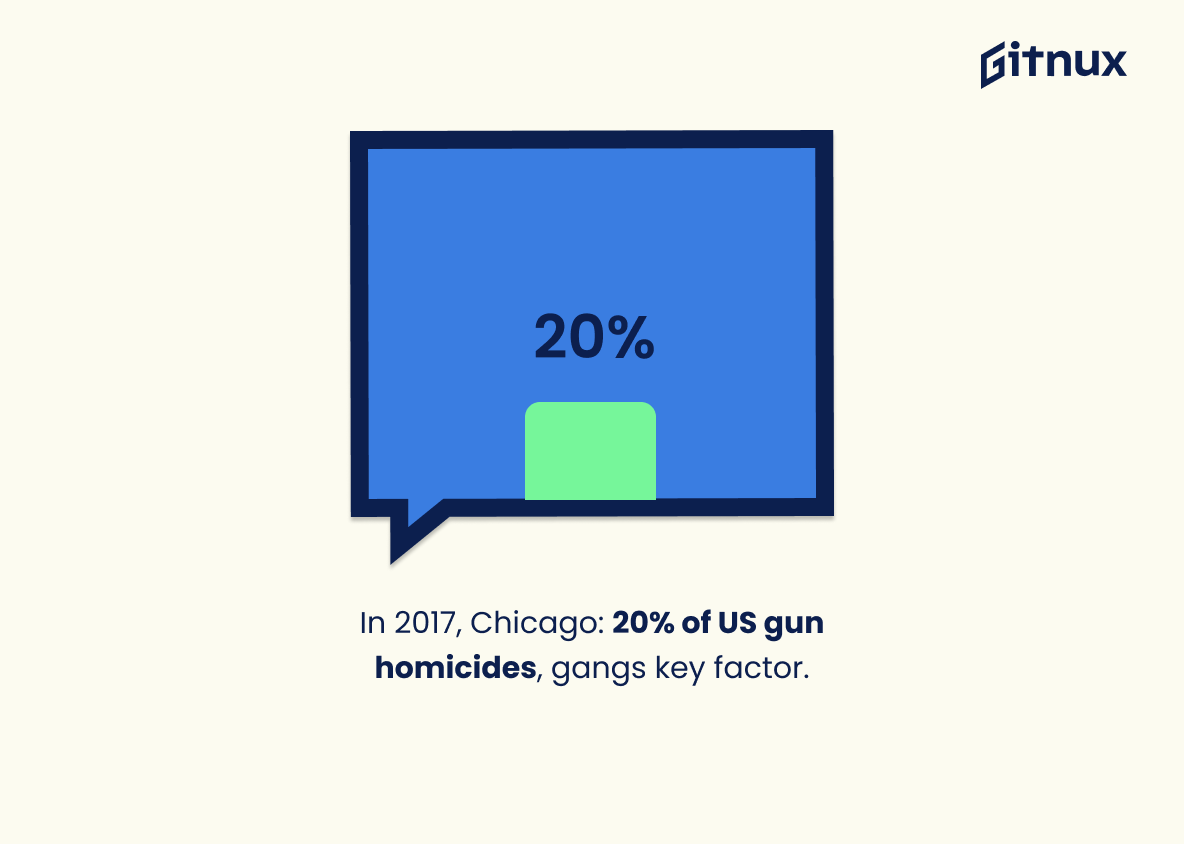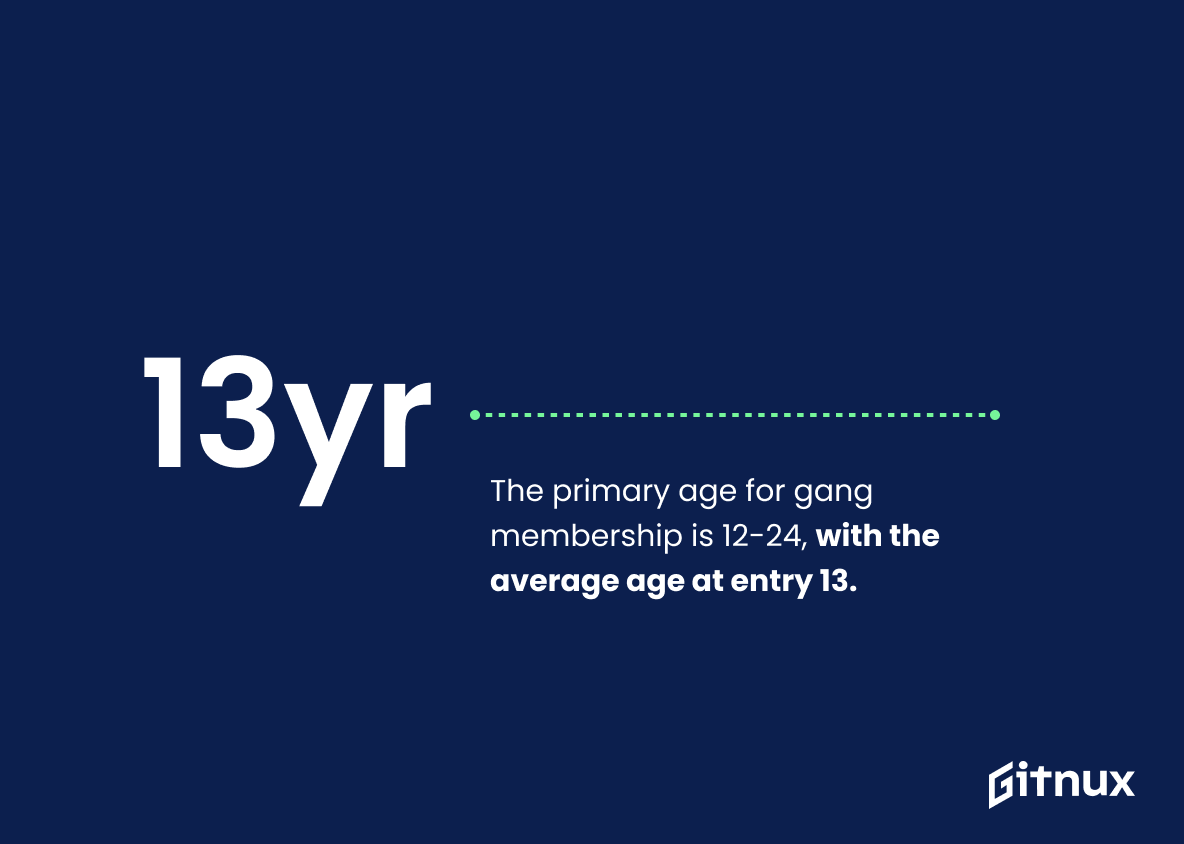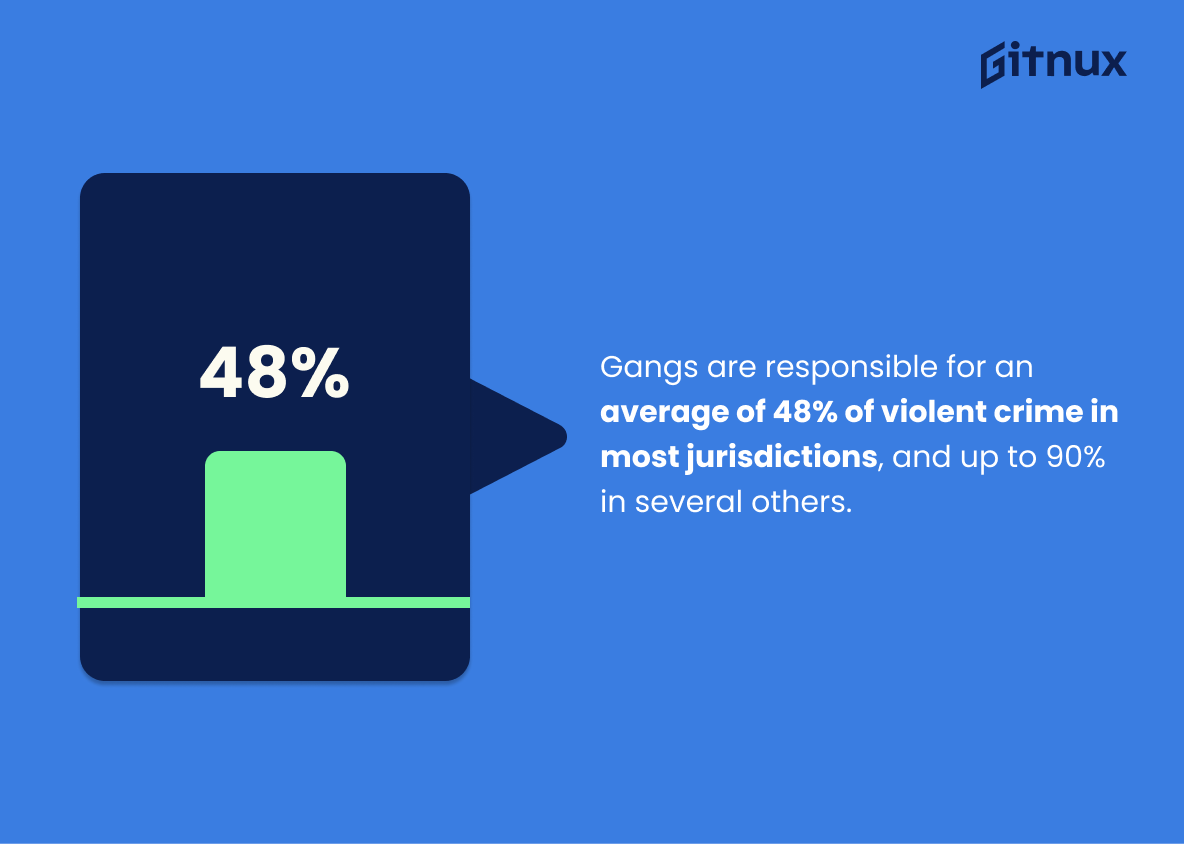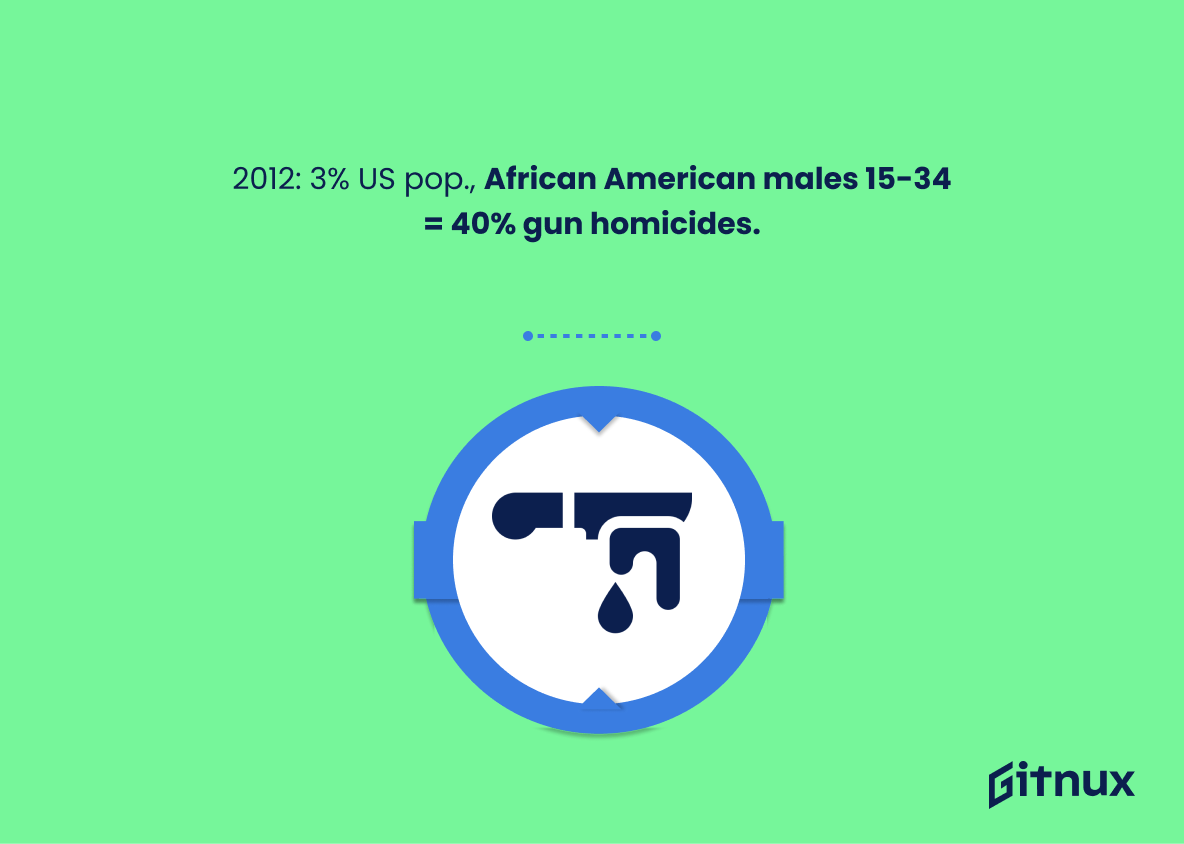In today’s world, gang violence remains a poignant and infamous facet of society. It significantly contributes to crime rates and claims countless lives each year while leaving a plethora of communities in fear and disarray. This blog post delves into the chilling landscape of gang violence statistics: a numerical exploration of an ongoing societal crisis. We aim to shed light on the severity of gang violence, as well as understand its ramifications on communities globally. As we try to comprehend the figures, we also aspire to underscore the urgency for appropriate solutions to this rampant issue that affects us either directly or indirectly. It’s more than just numbers; it’s about lives lost, families shattered and communities crippled due to gang violence.
The Latest Gang Violence Statistics Unveiled
In 2011, gang violence was responsible for roughly 13% of all homicides in the United States.
Peering into the shadows of our society, we uncover the gruelling reality that in 2011, nearly 1 in 8 homicides across the United States were traced back to gang violence. This chilling revelation unravels the tight knot of safety one might feel, shedding light on the layers of danger present in certain areas. Such a statistic doesn’t merely crown the pages of a blog post about gang violence stats, but it becomes the compelling protagonist in our narrative, magnifying the importance of public safety initiatives, effective rehabilitation programs, and community education. Any discourse on the issue, henceforth, is obliged to acknowledge and address this undeniable fraction of fatalities tied to gang violence. It punctuates the urgency and the gravity of the situation, urging us to reconsider our approaches to not just prevent such heinous acts, but also to disarm the birthplaces of such violence. This 13% isn’t just a figure, it’s an alarm clock lowering the snooze on our indifference, it’s the ink that sketches the maps of our policy building and a demand for attention that remains beyond denial.
As of 2016, there were approximately 33,000 violent street, motorcycle, and prison gangs active in the United States, with more than 1.4 million members.
Painting a vivid picture of the profound problem of gang violence, the figures from 2016 serve as a stark reminder of the size and significance of this issue in America. With an estimated 33,000 violent gangs actively wreaking havoc on our streets, in biker gatherings, and even within the seemingly impenetrable walls of our prisons, this statistic speaks volumes about the scale of this menace.
Even more alarming is the vast number of members these gangs boast. With 1.4 million individuals swallowed up by this violent underworld, it hammers home the magnitude of people caught in this vicious cycle. A firm grasp of these figures allows one to apprehend the colossal efforts and resources required to tackle gang violence, bringing the urgency and severity of the problem to the fore. Undeniably, these hard-hitting facts demand our attention, calling for concerted efforts towards a safer and more peaceful society.
From 1999 to 2007, approximately 65% of gang-related homicides occurred in large cities (population > 100,000).
In illuminating the reality of gang violence, it’s striking to observe that from 1999 to 2007, large metropolises—those with over 100,000 inhabitants—were the scene for roughly 65% of gang-related homicides. This nugget of information paints a picture of the severity and concentration of gang violence in densely populated areas. Through this viewpoint, our blog post can help elucidate the urban-focused nature of this problem, potentially guiding policy discussions towards effective strategies for handling gang violence effectively where it’s most rampant. Appropriately addressing this issue ultimately relies on understanding such pivotal data points.
Los Angeles, considered the gang capital of the United States, has over 450 active gangs with a combined membership of over 45,000 in 2022.
Examining this piece of statistic provides a stark illustration of how gang prevalence can escalate in urban areas. The fact that Los Angeles, often dubbed the gang capital of the United States, harbors over 450 active gangs with a cumulative membership surpassing 45,000 in 2022, paints a compelling picture of the gravity of gang violence problem. In a blog post on gang violence statistics, such data not merely reflects numbers but underlines the socio-economic challenges, law enforcement difficulties, and the deep-seated issues of violent crimes and community safety. This data-point calls for urgent and effective strategies to combat gang violence, turning it into a barometer for policy efficacy in urban crime reduction.
On average, 60% of all youth gang members are Hispanic or Latino, 30% are African American, 8% are White, and 2% are other/multiple races.
Peeling back the layers of these percentages paints a striking picture of ethnic and racial trenches in youth gang membership. With Hispanic or Latino youth forming the majority at 60%, the magnitude of their representation significantly eclipses the other groups. The African American youth, encompassing 30%, present a smaller but still potent force.
In stark contrast, only 8% of white youth participate in gang activities, while youth identifying with multiple or other races form a scant 2%. Illuminating these variances on a gang violence-focused blog post won’t merely showcase the devastating reality of these subcultures within our societies.
Simultaneously, it could light a spark of intrigue, stoking the readers to ponder on possible contributing factors to these skewed distributions. Better still, these glaring statistics may serve as a powerful call to action — to lawmakers, educators, and community leaders — urging them to address the complex, deeply-rooted socio-economic issues contributing to gang violence among our youth.
A study found that the percentage of gang-involved inmates who reported violence within gangs they joined was 92% in males and 83% in females.
Delving into the realm of gang violence statistics, this particular data unveils a telling panorama. A conspicuous 92% of male inmates and a slightly lesser yet significant 83% of females involved in gangs reported experiencing violence within the gangs they joined. This stark revelation not only underscores the omnipresence of violence within gang-dominated settings, but also highlights the gender-related variations in its experiential aspects.
When dissecting Gang Violence Statistics for a blog post, this statistic undeniably stands as a focal point. It punctuates the discourse with the grim reality of pervasive violence thriving within gangs. Further, the slight decrescendo from males to females might trigger thought-provoking discussions around gender dynamics within these violent ambits. Hence, it fuels the narrative, serving both as a powerful eye-opener and a catalyst for critical thoughts on the issue.
Approximately 48% of all violent crimes in a number of U.S. jurisdictions are linked to gang activity.
In the broad panorama of gang violence statistics, the figure stating “Approximately 48% of all violent crimes in a number of U.S. jurisdictions are linked to gang activity” delivers a startling revelation. It underscores the magnitude and prevalence of gang-related activities, serving as a vivid reminder that nearly half of the violent crimes are not isolated incidents. Instead, they are intricately tied to gang culture. This percentage swiftly dispels any notions of the gang issue being marginalized, underscoring it as a widespread concern that could affect countless households across these jurisdictions. A statistic of this weight throws into sharp relief the urgency of policies and interventions aimed at curbing gang activities, and forms the crux around which discussions on effective crime reduction strategies should pivot.
According to the World bank, 526,000 people lost their lives due to the acts of intentional homicide in 2004, with a significant proportion linked to gang violence.
Contemplating this World Bank data underscores the magnitude of the human cost associated with gang violence, which marked the termination of over half a million lives through intentional homicide in just a single year – 2004. This startling figure serves as a stark reminder of the severity of the gang violence issue, underlining the immensity of the challenge that authorities and organizations face globally. Standing alone as a grim symbol of lost souls, this statistic is a potent catalyst for deepening our understanding of the problem as we tread the complex path of exploring gang violence statistics.
Roughly 40% of gang members are under the age of 18, according to the Office of Juvenile Justice and Delinquency Prevention.
In unearthing the complex portrait of gang violence, it’s almost jarring to encounter the statistic that approximately 40% of gang members are under 18, as stated by the Office of Juvenile Justice and Delinquency Prevention. It doesn’t just serve as a cold, hard fact, but it bears an urgent narrative – a narrative about young lives overshadowed by violence and crime.
In a landscape dominated by discussions of gang violence statistics, this detail casts an unsettling spotlight on the age demographics within these groups. It forces the reader to face a more distressing picture of a world where individuals, who might otherwise be molding their future in classrooms, are instead embroiled in the labyrinth of gang culture.
While many statistics serve to quantify a problem, this one particularly screams urgency and helps underline the gravity of juvenile crime. It acts as a wake-up alarm, elaborating on the extent of youth involvement, and consequently reinforcing the importance of immediate strategies – not just towards curbing gang violence, but also towards intervention and prevention efforts aimed at those under the age of 18. In a discourse about gang violence, this statistic inevitably haunts us with a powerful question: “What about the children?”
Gang members have a 60 times higher chance of being killed than the general population.
Meticulous exploration of Gang Violence Statistics sweeps out a chilling revelation, adorning the core of our blog post with a brutal narrative. This revolves around the stunning facts that gang members face a peril interpreted as a 60 times higher risk of meeting a violent end compared to the general populace. Translated into the language of mathematics, it’s as if each gang member walks under the shadow of a massive ’60 times higher’ guillotine, looming over their survival chances with no remorse. This statistic acts as a lighthouse in our examination of gang violence, illuminating stark realities and unknown depths of risk involved in such lifestyles. It punches a gory hole into any glorification of gang life, revealing the life-threatening undercurrents that these individuals wade through every day. Above all, it serves as a harsh reminder of the violent dimensions that thread themselves into our social fabric, demanding relentless attention and meaningful action.
In El Salvador, one of the world’s most dangerous countries, 60% of the violent deaths in 2016 were gang-related.
Imagine being plunged into the epicenter of a thriller movie scenario—El Salvador, a country known to be perilously fraught with danger. The stark figure of 60% of the violent deaths in 2016 being gang-inflicted, casts a daunting shadow over the tale of this terrain. This appalling figure illuminates the grim reality of a nation plagued by gang warfare and validates the urgency for global awareness and intervention. As we sink deeper into the abyss of gang violence statistics, it becomes evident that this alarming figure, a screaming siren in a sea of demographic data, lends a compelling, pivotal perspective to our discourse. It undeniably drives home the enormity of the gang crisis in El Salvador, in turn forcing us to critically discern the public safety situation; it’s a numerical beacon, guiding our exploration of effective solutions to this global scourge.
In 2017, Chicago alone accounted for 20% of the nationwide total of gun homicides, with gang violence playing a significant role.
Bridging the raw numbers and tragic anecdotes, our understanding of gang violence becomes more concrete as we delve into this startling fact: In 2017, Chicago single-handedly shouldered 20% of the nationwide total of gun homicides, with gang violence being a driving factor. This paints a stark portrait of the city’s struggle with gang violence. We’re dealing not just with sporadic incidents, but with a systemic issue that penetrates the very fabric of society. The magnitude of this problem, reflected robustly in that statistic, emphasizes the urgency to concoct effective measures targeting gang violence. This isn’t just a mere fraction; it’s an outcry for national attention and strategic intervention.
The primary age for gang membership is 12-24, with the average age at entry 13.
Shedding light on the alarming fact that the primary age for gang membership ranges between 12 to 24, with 13 years being the critical initiation point, adds a compelling layer of understanding to the blog post on Gang Violence Statistics. Such insight forces the reader’s attention to the grim reality where children, barely out of elementary school, are embroiled in violent lifestyles. It underscores the urgency for prevention efforts targeting this vulnerable age group, thus adding depth to discussions around preventive strategies and interventions. This chilling statistic serves as a solid springboard for potential discourse about the influential factors leading to early gang involvement, thereby enriching the landscape of the subject matter.
Gangs are responsible for an average of 48% of violent crime in most jurisdictions, and up to 90% in several others.
The importance of the aforementioned statistics cannot be overstated in our discourse on Gang Violence Statistics. Like putting a magnifying glass over the menacing underworld of gang-related activities, this data shines a telling light on the brutal reality. It illustrates that within most jurisdictions, almost half of the violent crime can be traced back to gang activities. Even graver, in some other specific jurisdictions, gang violence escalates to a chilling 90%, displaying a sheer domination of crime landscape by these problematic gang cultures. Hence, these figures serve as stark reminders that underscore the gravity and prevalence of gang violence, persuasively driving home the urgent need for public awareness, policy change, tangible solutions and interventions.
In 2012, African American males aged 15-34, who comprise around 3% of the US population, accounted for approximately 40% of all gun homicides.
Shedding light on the gravity of gang violence, the staggering figure of 40% gun homicides involving African American males aged 15-34, who only represent a mere 3% of the US population in 2012, provides a clear, sharp focus. The unrelenting grip of this disproportionate representation unveils the disturbing connection between gun violence and this demographic, offering a crucial perspective on the urgent need for concerted action towards effective interventions and preventative measures in combating gang violence.
Conclusion
Understanding the severity and intricacies of gang violence is made tangible through statistics. These numbers are not just digits; they represent human lives affected and communities disrupted. Gang violence remains a stark reality across the globe, with a significant impact on public safety, societal well-being, and economic health. However, it’s important to remember that these statistics also guide us towards creating more effective, targeted strategies to alleviate this issue. While these numbers are alarming, they also offer hope – they show us where we need to act, how we should prioritize our resources, and the potential lives we can save through concerted prevention and intervention efforts.
References
0. – https://www.www.ncbi.nlm.nih.gov
1. – https://www.www.cdc.gov
2. – https://www.worldpopulationreview.com
3. – https://www.www.vox.com
4. – https://www.www.who.int
5. – https://www.www.nationalgangcenter.gov
6. – https://www.ojjdp.ojp.gov
7. – https://www.www.pbs.org
8. – https://www.pubmed.ncbi.nlm.nih.gov
9. – https://www.everytownresearch.org
10. – https://www.www.ojp.gov
11. – https://www.www.ojjdp.gov
12. – https://www.www.fbi.gov
